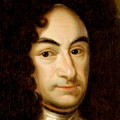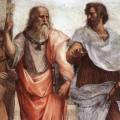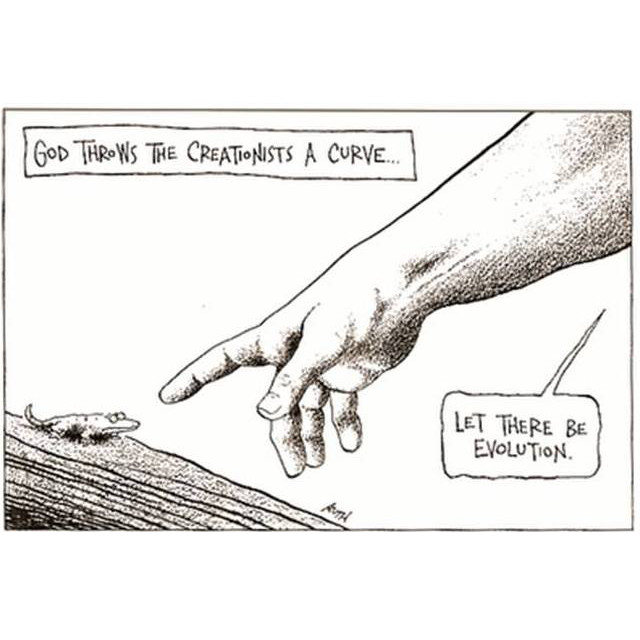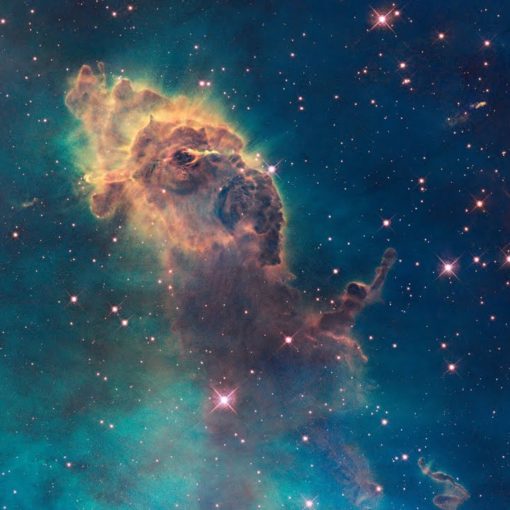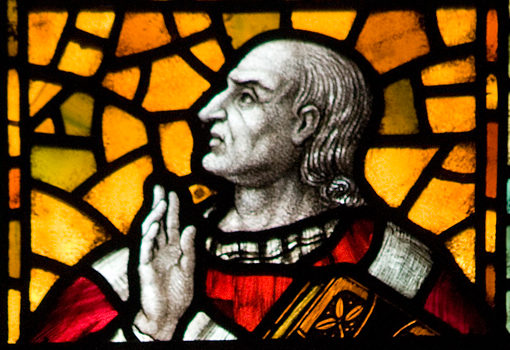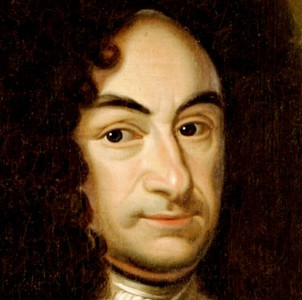Introduction
Cosmological arguments are a family of arguments attempting to show that the universe requires a first cause or sufficient reason (see: Lebnizian Contingency argument) to explain its existence. The form of the argument we will deal with is espoused by W. L. Craig and began in the 3rd and 4th century in response to the Greek hypothesis of the eternity of the world. The argument was further developed by medieval Islamic thinkers. Craig calls this the Kalam cosmological argument (Kalam means speech in Arabic, and identifies a doctrinal position)
Logical form
- Everything that begins to exist has a cause
- The universe began to exist
- Therefore, the universe has a cause
Since this is a valid logical form, if the premises are true the conclusion necessarily follows, therefore the argument centers on the truth of the premises. Let’s look at the premises one-by-one.
“Everything that begins to exist has a cause”
There are two types of support for this premise, philosophic evidence, and scientific evidence.
Philosophically this claim seems to be true, it seems that being begets being, and does not come from non-being. No one really believes that things often pop in to being out of nothing uncaused. If something can come in to being uncaused out of nothing why doesn’t everything do so?
Occam’s Razor
Often to defeat this idea, Occam’s razor is invoked which states that one should not multiply causes beyond necessity. It is claimed that one cause (especially an all powerful God) is more complicated than no cause and should therefore be disregarded. However this reasoning is faulty. Occam’s razor says not to multiply causes beyond necessity, meaning that if two hypotheses are equally supported by the evidence, the simpler is preferable. However in this case the argument is that it is much more probable that the first premise is true than its negation, therefore the hypothesis that the universe is uncaused is not sufficient to explain the result and Occam’s razor is inapplicable. For example, a paleontologist posits the past existence of dinosaurs after finding their fossils despite the fact that living dinosaurs are a complicated explanation. Consider explanatory power and scope.
Quantum Physics
Quantum physics is sometimes used to refute this premise. For example certain particles sometimes appear out the quantum vacuum for no apparent reason. Therefore some have posited that the universe is a quantum fluctuation out of nothing, however; not all physicists agree that quantum physics is causally indeterminate (Copenhagen interpretation). Although this interpretation is the majority view, there are at least nine others and not all are causally indeterminate, for example the de Broglie–Bohm theory is fully deterministic. These interpretations are philosophically driven more than scientifically driven. Even in the Copenhagen interpretation the particles do not come into being out of nothing, but rather out of the quantum vacuum, which is not the same as our conceptualization of nothing, but rather a sea of energy subject to natural laws.
If the universe came into being out of the quantum vacuum, that is not the same as coming into existence out of nothing since the quantum vacuum must have been preexisting. (nothingness cannot have any properties). The philosopher of science Robert Deltete is recorded in W. L. Craig’s book, God?: a Debate Between a Christian and an Atheist as saying, “There is no basis in ordinary quantum theory for the claim that the universe itself is uncaused, much less for the claim that it sprang into being uncaused from literally nothing.”
In The Universe, Not Of The Universe
Sometimes it is said that although the first premise certainly applies within the universe, it does not necessarily apply to the universe. This premise is, however, not a physical principle but a metaphysical principle. It is true of being as If it is true, it applies to anything that truly exists. Craig quotes J. L. Mackie in Christian and True Apologetics as saying , “I myself find it hard to accept the notion of self-creation from nothing, even given unrestricted chance. And how can this be given, if there really is nothing?”
“The Universe Began to Exist”
There are both philosophic and scientific evidences for this premise.
- The first philosophic argument for the truth of the second premise
- P3) An actually infinite number of things cannot exist**
- P4) A beginning-less series of past events requires an actual infinite number of things
- C2) A beginning-less series of past events cannot exist
- Argument
- Premise 3–Actual infinites are collections that contain an infinite number of members in reality.
- This type of infinity leads to self-contradiction; For example, Hilbert’s hotel
- Suppose that a hotel has a finite number of rooms
- If all rooms are full, no new people can be admitted
- Suppose that a hotel has a infinite number of rooms
- If all rooms are full, new guests can easily be admitted, but there will not be any more guests than before they arrived
- Because of contradictions such as this, it is generally agreed that actual infinites are absurd in the real world
- Some argue that actual infinites exist in mathematics, however this is not universally agreed upon by mathematicians
- Even so, the existence of actual infinites in mathematics does not necessitate their existence in the real world
- Actual infinites do violate set theory, because in infinite set theory certain mathematical operations are prohibited, but if these quantities existed in the real world, there would be nothing to stop a person from, for example, subtracting from an infinite number, which is undefined.
- This type of infinity leads to self-contradiction; For example, Hilbert’s hotel
- Premise 3–Actual infinites are collections that contain an infinite number of members in reality.
- Some people claim examples of actual infinities in the real world, for example a person can divide a distance in half an infinite number of times
- This is confusing an actual infinite with a potential infinite, if one were to do as is proposed and divide a distance in half continuously, one would never actually reach infinity.
- Otherwise if one is assuming that there are already present in the space an actual infinite number of parts, one is begging the question, by using the conclusion before it has been proven
- Premise 4—this premise seems to be obvious, if the past has existed forever (an infinite amount of time) there would exist an infinite number of past events
- The second philosophic argument for the second premise
- P5) An actually infinite collection of things cannot be formed by successive addition
- P6) The series of past events is a collection of things formed by successive addition
- C3) The series of past events cannot be actually infinite
- Argument
- Premise 5—the impossibility of counting to infinity
- It is obvious that as long as one starts with a finite number, addition will always result in a finite number. An actually infinite number cannot be formed by addition unless one of the numbers being added is infinite.
- Even if one started with infinity and subtracted moments to arrive at NOW one would never reach NOW. One cannot subtract from infinite numbers and arrive at NOW because it will always be infinity. (and it is also mathematically disallowed to subtract from infinity)
- Counting backwards from infinity will never result in less than infinity
- Premise 6—is the series of past events formed by successive addition
- As we see it, time progresses by individual moments or events succeeding each other as time mover forward
- This premise depends on the time philosophy used, static (B theory) or dynamic (A theory)
- A static view of time invalidates this argument (B theory)
- Premise 5—the impossibility of counting to infinity
- The first scientific argument for the second premise
- In 1917 Albert Einstein applied the general theory of relativity to cosmology
- He assumed that the universe was homogenous and static, but his equations did not fit with our observations
- In order to fix this problem he created a new factor called the cosmological constant that would make a static universe possible
- Einsteins model was incredibly unstable, and the slightest change in the universe would cause it to collapse
- In the 1920’s Russian mathematician Alexander friedman found a solution to einstein’s equations that predicted that the universe is expanding
- In 1929 edmund hubble discovered the red-shift in distant galaxies, this is due to the Doppler effect and proves the expansion of the universe
- Expansion of the universe is actually the expansion of space, not movement of the galaxies with respect to space
- The logical effect of this is that at sometime in the past, all space, matter, and energy existed at a single point in space
- This “Big Bang” is essentially the creation of all space, matter, time, and energy
- Therefore the universe had an absolute beginning, coming in to existence ex nihilo
- Often pleas are made that there are many other models for the origin of the universe that do not require an absolute beginning, but there are none that areas well supported
- Steady state theory (also known as the infinite universe theory and continuous creation)-proposed in 1948 by fred hoyle, Thomas gold, and Hermann bondi, says that the universe is expanding, but new matter is created from nothing in between receding galaxies, and therefore the universe’s density never actually changes. Has no experimental evidence, and radio telescopes have also shown that the universe was in fact different in the past. Also the big bang is required for the synthesis of light elements, and the microwave background discovered in 1965 shows good evidence for the big bang
- Oscillating models for the universe- astronomers posited that the gravitational force could overcome the expansion of the universe and produce a “big crunch” and then re-expand in an eternal cycle. This model certainly was speculative but it was designed to circumscribe the metaphysical problem of an absolute beginning to the universe. In 1970 Roger Panrose and Stephen Hawking formulated singularity theorems that showed that a universe in graviataional collapse would not re-expand but remain in singularity. In contemplation of his work, Hawking has remarked, “almost everyone now believes that the universe and time itself had a beginning at the big bang.”
- Furthermore, there are no known physics that could cause a collapsing universe to expand back out
- The observational evidence shows that the universe is not dense enough to halt the expansion, and in fact the universe now appears to be accelerating in its expansion
- In 1917 Albert Einstein applied the general theory of relativity to cosmology
- Thermodynamics also predicts a beginning even of the oscillating model, due to the fact that entropy would be conserved between oscillations
- Vacuum fluctuation models- quantum mechanics is required to understand the beginning of the universe. In quantum mechanics virtual particles are believed to briefly come into existence from nothing. It was posited in the 1970’s that perhaps the universe itself is a long lived virtual particle within a greater “mother universe” consisting of a quantum vacuum
- These theories did not out last the 1980’s among cosmologists because they face internal inconsistencies. For example, it is impossible to know where or when a fluctuation resulting in a universe would occur, there is a positive probability at every point in space that a universe would occur, then given an infinite past universes will form at every point, expand, collide, and coalesce filling the mother universe an infinite time ago. This requires the expansion of the mother universe to solve, which returns to the original problem (therefore use occam’s razor)
- Christopher Isham, a british quantum gravity expert, has said that these inconsistencies have proved fatal to these theories and they never gained wide acceptance
- Chaotic inflationary theory-andrei linde is a major proponent
- As universe expands, certain domains begin to expand rapidly, then those domains produce new domains (like a fractal) and has infinite future
- In 1994 Arvind Borde and Alexander Vilenkin showed that a inflating universe must have had an absolute beginning
- Quantum gravity models- these models are highly speculative (since a quantum theory of gravity does not yet exist)
- The most well know of these theories is proposed by Stephen Hawking, which says that space time is a closed surface (like a sphere)
- This can be done be adding imaginary time into einsteins equations which removes the singularity at the beginning of the universe
- These theories remove a beginning point, but do not propose an infinitly old universe, but a universe of finite past with no beginning point. Therefore the universe has a beginning still (if one assumes that having a finite number of equal periods of time in the past requires a beginning), but would be created out of nothing in even a truer sense than in the big bang model.
- Also the use of imaginary should cause us to question the validity of the results since imaginary numbers have no physical or real significance. (if one converts hawking’s equations back to real numbers the singularity re-appears)
- String cosmology- says that all matter is composed of vibrating strings of energy
- Echpironic scenario
- Cyclic – 2 3d branes existing in 5d space are parallel and colliding and receding from eachother which causes expansion in the branes
- Very speculative, string theory is not understood or solved
- New version of the oscillating theory, not very popular among scientists
- Cannot be infinite in the past, Arvind Borde, Alan Guth, and Alexander Vilenkin in 2003 showed that no inflationary universe can be infinite in the past (a generalization of their earlier work) even in brane cosmology
Further Reading
The Kalam Cosmological Argument, in The Blackwell Companion to Natural Theology by Craig, W. L. and Sinclair, J. D. (2009) (eds W. L. Craig and J. P. Moreland), Wiley-Blackwell, Oxford, UK. doi: 10.1002/9781444308334.ch3

